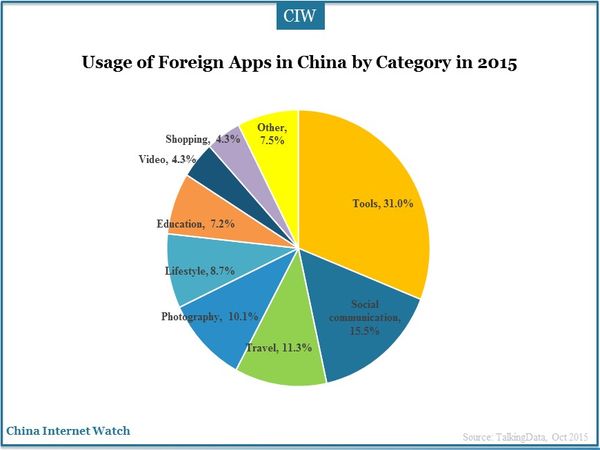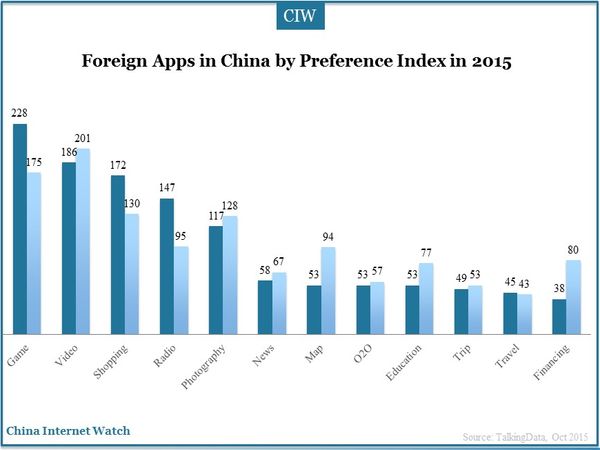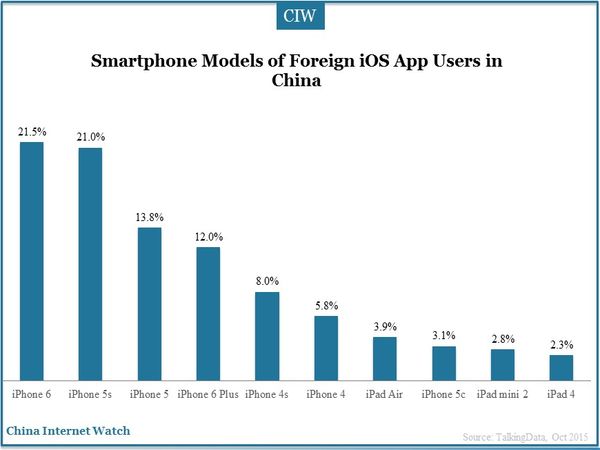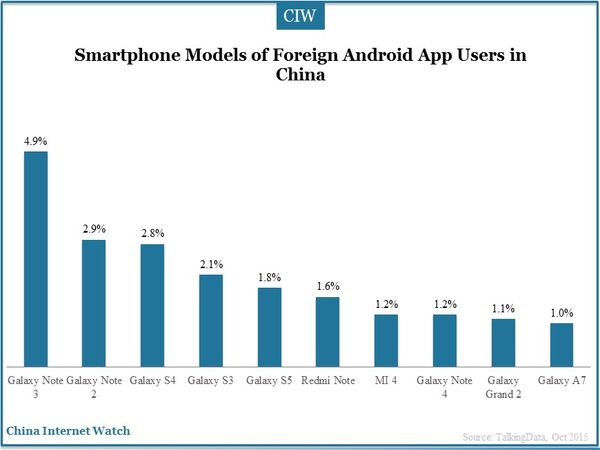
Mobile apps have covered all aspects of our life, including social communication, life services, information and entertainment and other. By 2015 Q3, 3.1 million smartphones have installed foreign applications according to TalkingData, accounting for about one-quarter of the overall mobile internet users.

Tool apps apply the maximum number of foreign apps (31.0%), followed by social communication (15.5%), travel (11.3%) and photography (10.1%). Social communication apps have a variety of forms, such as Facebook, Instagram, Twitter, Line and the like.

Users of different mobile operating systems tend to prefer different kinds of foreign apps in China. iOS users love games, video, online shopping, music and radio apps; and Android users are more likely to watch videos, play games, take photos and use map or navigation apps. Usage of education and finance apps by Android users is also higher than the iOS users.


In general, handsets of foreign app users are relatively advanced. Although iPhones 6S was released in Chinese market in late September, 12.0% of iOS users have updated to this model; the proportion of iPhone 5 and iPhone 6 users account for more than 68% of all iOS users. Samsung’s eight smartphone models were in the top ten Android smartphonesi.
The most popular foreign apps on Android in China are Flipboard, Uber, Google Pinyin, Google Maps, Google Search, Google+, Gmail, Google Browser, Hangouts and YouTube. Google owns 70% of the ten most popular foreign mobile apps.
Top ten popular foreign apps on iPhones in China are Facebook, E-Reminder, Uber, YouTube, Amazon, Instagram, WhatsApp Messenger, Skype, KFC and Google Browser.
Users of Facebook, Instagram and YouTube are concentrated in Taiwan and Hong Kong; more users in north China and first-tier city use Flipboard, Evernote, Airbnb, Uber and other foreign apps. The largest userbase of Uber is in Chengdu.
Also read: Xiaomi App Store: 20 Billion App Downloads in H1 2015